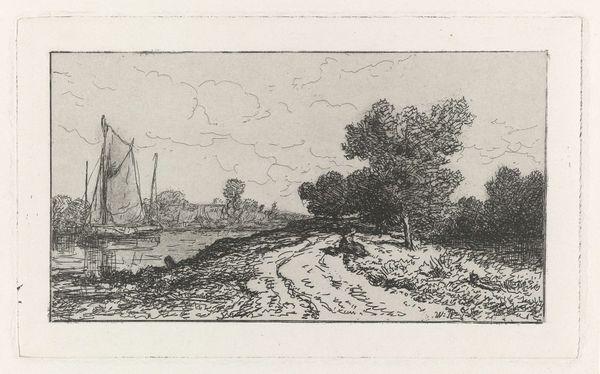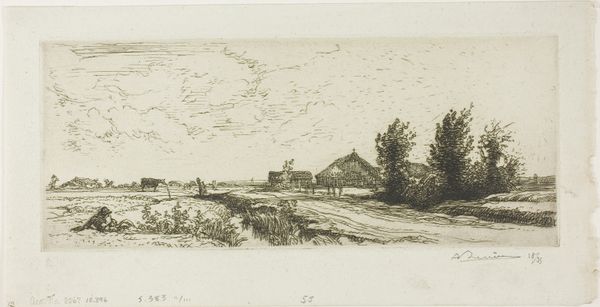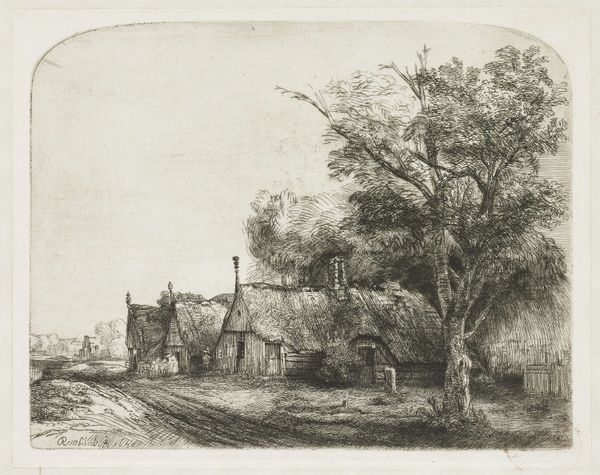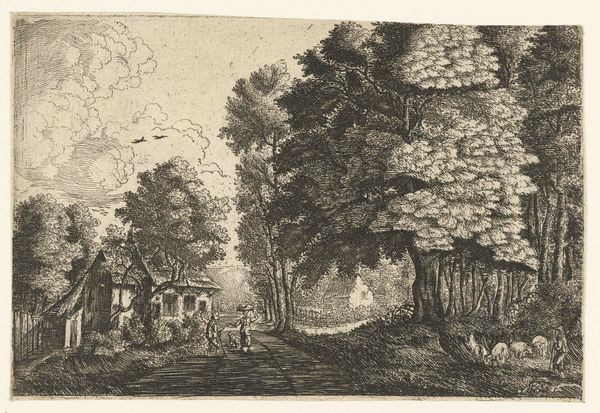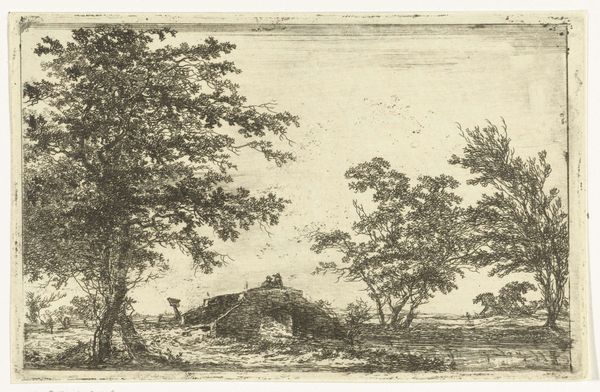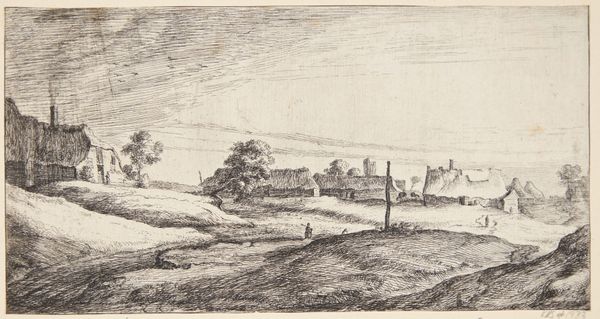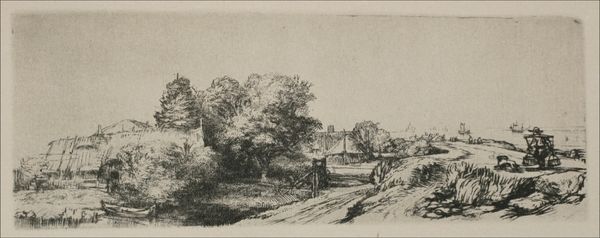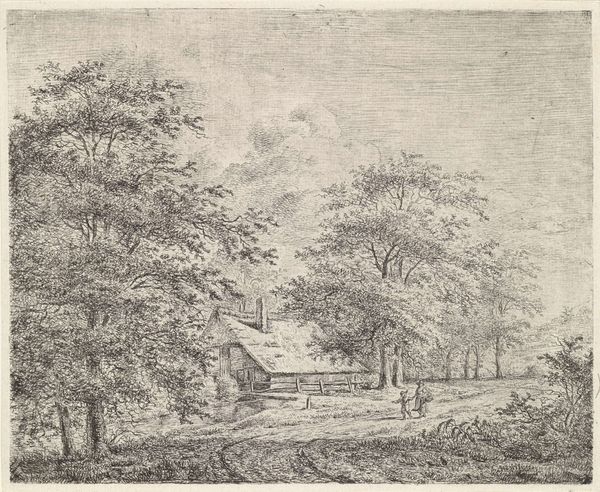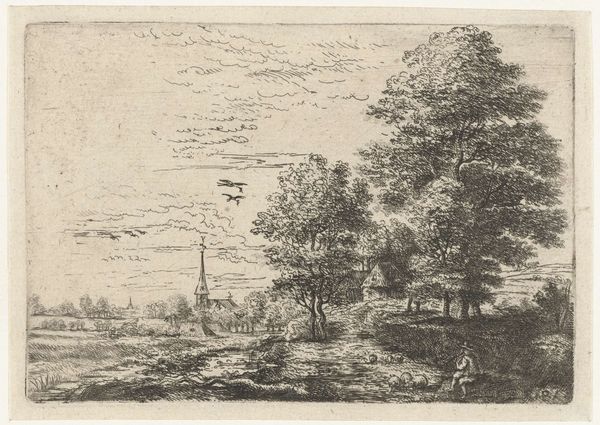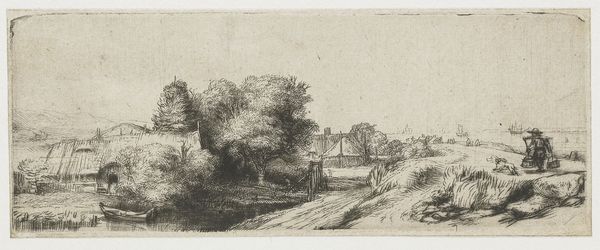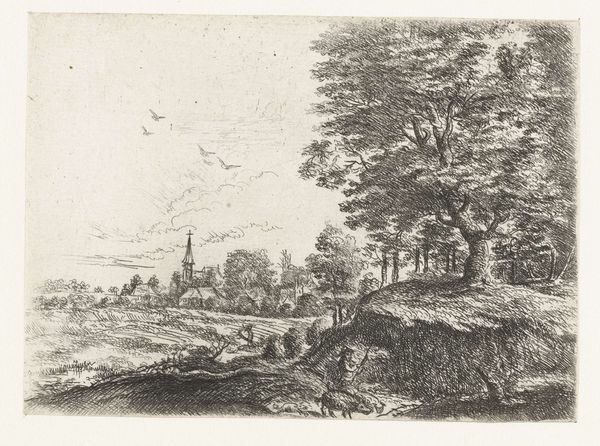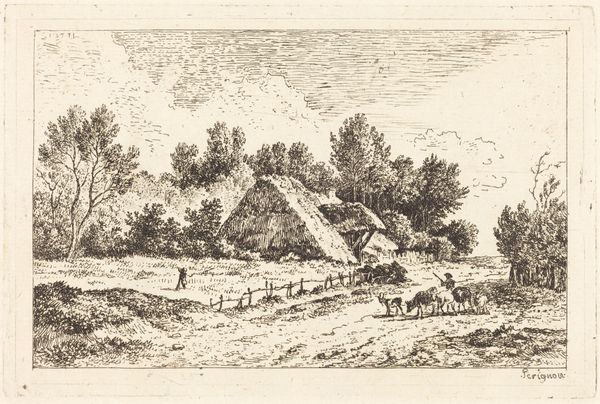
print, etching
# print
#
etching
#
landscape
#
genre-painting
Dimensions: height 64 mm, width 100 mm
Copyright: Rijks Museum: Open Domain
Editor: Here we have "Figure on a Road by a Mill," an etching by Hendrik Jan Hein, created around 1854. It feels quite somber, a muted landscape. What strikes me, looking at this, is the stark simplicity. What do you see in this piece? Curator: Immediately, I'm drawn to the materiality of the etching process. Consider the labor involved, the artisan meticulously using acid to bite into the metal plate. That repetitive, almost industrial action, is then used to depict a pre-industrial scene of rural life. Editor: That’s interesting. I hadn't thought about the contrast between the printmaking process and the image it depicts. Curator: Right. The windmill itself is crucial. Think about its function: grinding grain, feeding communities. The print makes it idyllic but was this the lived reality for those whose labor it relied upon? Also note the scale, suggesting distance and an implicit connection between labor, trade and subsistence, far from markets and cities. Editor: So you're saying the image hints at larger systems of production and labor? Curator: Precisely! Etchings were often reproduced and distributed, effectively making "art" a more democratic product for consumption, changing it's social value. Where this scene shows agriculture, the work and its production represent the slow transition from rural to urban. Editor: It does bring another layer to the image thinking about how it got here as a product of different types of work and its circulation. I appreciate seeing it in that context. Curator: Me too. It's a reminder to always look beyond the surface, toward the means and conditions of production.
Comments
No comments
Be the first to comment and join the conversation on the ultimate creative platform.
